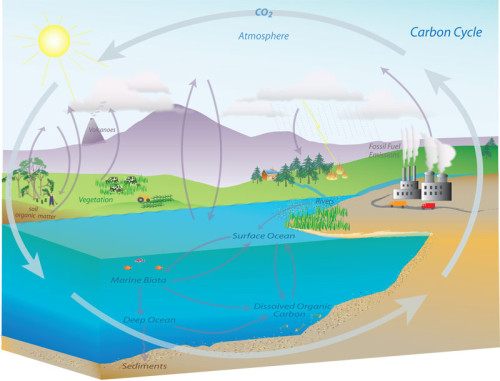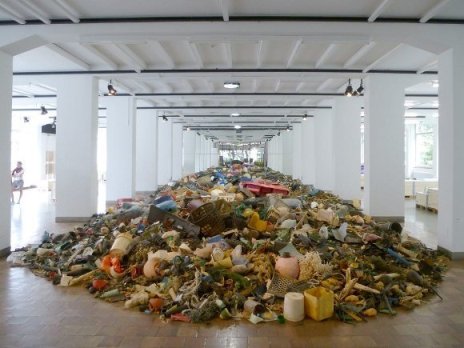When I was a child we often went on a holiday to France. To get us through the long journey we’d bring along small packages of apple juice, those with three in a wrapping and with shining foil to stick your straw through. They were very convenient: they didn’t spoil during such a long warm trip. After arriving and properly setting up the folding caravan I always considered it my responsibility to check all the cupboards for what we’d brought along, and every time I’d find canned meat balls from last year – still edible! It was my first conscious contact with tenability and degradability. The opposition is one whose importance for sustainability I am just now starting to realise.
That we can keep food for so long is remarkable, especially when you consider that even in the fridge it often takes just a few days for the food to become green and mouldy. We need to think about tenability, because our lives take place within cycles larger than us, cycles of elements within which our food is only a temporary form that is remineralised quickly by micro-organisms, after which it can again serve as food for plants and animals.
To keep the food available to ourselves we need to protect it from getting cycled into forms we can’t use. This keeps it tenable for us as long as possible, so we can maximise our use of it. We do this not just to food but also to buildings and other goods: we make stainless steel, fire retardants and (almost) undegradable plastics. We find ways to retard natural degradation, not just by microbes but also under the influence of e.g. water and light. In this way we change natural processes and by doing so, flows in the biochemical cycles of system earth. Some flows we speed up and others we slow down to maximise the amount of elements in compartments useful to ourselves. In the end this results in the accumulation of compounds in certain compartments.
But everything counts in large amounts, bringing problems along with it. We accumulate not just desirable substances but also less desirable ones, leading to problems by interfering with the natural functioning of man and the environment. Already with several substances produced at large scale this has led to problematic climax points: think of DDT in the seventies, PCBs in the eighties and the current problems surrounding plastic garbage patches in our oceans. Organic compounds in fact top the lists of (potential) water contamination, and at the moment there are growing concerns about increasing concentrations of pharmaceuticals in our environment and our drinking water (with the added problem that these substances have been designed for biological effect).
It clearly makes sense to alter material flows: it is what we have always done and will keep on doing to make the world more hospitable to ourselves. Neither is it strange that we increase residence time of compounds in for us useful forms. It is the outcome of a simple cost-benefit analysis that we optimise the potential for use of materials, and less spoilage means fewer costs. When looking from a perspective contained within the anthroposphere the focus should be on control and tenability.
But that’s simply not the whole story. Our manipulation of material flows has real unforeseen or unforeseeable consequences, because our actions take place within a system of flows already long in existence: a system to which our body and nature have been attenuated. Significant changes of these flows also lead to significant alterations of that functioning. Products made for tenability can accumulate with damaging consequences. From this perspective it is also valuable for man to streamline processes and products to natural and already existing dynamics, emphasising the importance of participation in existing flows, and degradability.
Readily degrading products are often somewhat less useful for our own purposes, but if they break down too slowly they accumulate with the concomitant potential damage. Therefore the ideal would be for these substances to be tenable as long as they stay within their desired environment (e.g. a house, an office) and degrade readily outside of that environment. The recently developed Glycix is a good example of this ideal. Where technological progress has not yet made such an ideal possible, a middle ground needs to be found between tenability and degradability.
Societal awareness of the problems of accumulation is growing, and legislation surrounding potential environmental pollution is becoming stricter – with a strong focus on degradability. The REACh-legislation, in effect since 2007, forces businesses marketing or producing chemicals in Europe to prove that their products do not pose significant environmental risks, effectively shifting to a proof of innocence rather than proof of harm.
Yet such legislation only provides the outlines for our actions. The Biobased paradigm supplies a creative way of actually giving them shape, by finding solutions in biologic and ecologic processes. In doing so it has already led to innovative and more sustainable solutions in the production of several (raw) materials. Although Biobased thinking may not solve all our environmental problems, it is giving us a way forward by not working against but with nature.
==
Photo’s:
Carbon cycle from NOAA: http://www.education.noaa.gov/Climate/Carbon_Cycle.html
Plastic: https://www.biobasedpress.eu/2012/11/plastic-soup-for-dummies/


